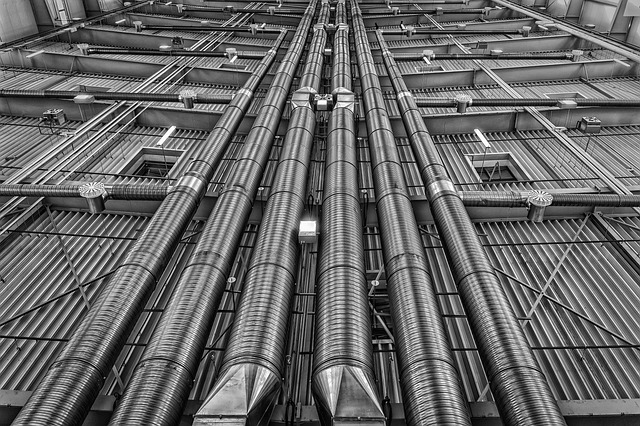destratification fans are innovative, ceiling-mounted devices that disrupt traditional HVAC systems by combating thermal stratification. They evenly redistribute warm air, eliminating cold spots and enhancing energy efficiency in commercial and industrial spaces. With advanced air mixing technology, these fans offer significant energy savings (up to 30%) while improving comfort and reducing the workload on heating/cooling systems. Ideal for offices, schools, and data centers, destratification fans are a sustainable solution for better temperature control and cost management.
Discover how energy-saving destratification fans are revolutionizing heating and cooling, offering a game-changer solution for lowering monthly utility bills. This article explores the science behind these innovative devices, highlighting their unique ability to distribute air evenly throughout spaces. We’ll delve into the significant energy savings they provide, guide you in choosing the perfect fan for your needs, and share real-world success stories showcasing their transformative impact on buildings’ energy efficiency.
- Understanding Destratification Fans: How They Work and Their Benefits
- The Impact on Energy Efficiency: Lowering Utility Costs
- Choosing the Right Destratification Fan for Your Space
- Real-World Applications and Success Stories
Understanding Destratification Fans: How They Work and Their Benefits

Destratification fans are a game-changer when it comes to thermal stratification and enhancing HVAC efficiency in both commercial and industrial settings. These innovative devices combat the natural tendency of warm air to rise, creating an even temperature distribution throughout a space. By using ceiling-mounted fans and advanced air mixing technology, destratification fans efficiently redistribute warm air, ensuring no stagnant zones or cold spots.
The process involves careful manipulation of air circulation, allowing for significant energy savings and improved comfort. Unlike traditional cooling methods that focus on removing heat, destratification fans work by stirring the existing air, preventing the formation of temperature differentials. This simple yet effective strategy not only reduces the workload on other systems but also minimizes the need for excessive heating or cooling, resulting in remarkable long-term cost savings.
The Impact on Energy Efficiency: Lowering Utility Costs

Destratification fans are transforming the way we approach energy efficiency and utility cost management. By actively fighting against the natural tendency for warm air to rise and cool air to sink, these fans create a more uniform temperature distribution throughout spaces, preventing the formation of thermal stratification. This simple yet powerful strategy has significant implications for HVAC efficiency, as it allows for reduced reliance on heating or cooling systems, which are major contributors to energy consumption and utility bills.
The strategic placement of ceiling-mounted destratification fans can lead to substantial energy savings by promoting better air circulation and temperature control. In commercial applications, such as offices, retail spaces, and industrial coolings, these fans have proven to be game-changers, enabling businesses to cut down on their carbon footprint and operating costs. The technology behind destratification fans ensures that warm air is redistributed evenly, preventing the need for excessive heating or cooling, thereby enhancing overall HVAC performance.
Choosing the Right Destratification Fan for Your Space

When considering energy-saving destratification fans, selecting the right model for your space is key to achieving optimal results and maximizing energy savings. These fans are designed to combat thermal stratification by redistributing warm air throughout a room, ensuring even temperature control. The first step is to assess the size and layout of the area you want to cool. Ceiling-mounted fans are ideal for large spaces as they can efficiently mix air across entire rooms, enhancing HVAC efficiency.
For smaller areas or specific hot spots, adjustable destratification fans with advanced air mixing technology offer a more targeted approach. This technology ensures warm air is effectively redistributed, eliminating cold spots and promoting comfortable indoor environments. Remember, the right fan for your space depends on factors like ceiling height, room dimensions, and desired level of temperature control. By choosing a fan that aligns with these requirements, you can enjoy significant energy savings while enhancing overall comfort in both residential and commercial applications.
Real-World Applications and Success Stories

In real-world applications, energy-saving destratification fans have proven to be game-changers in various industries and commercial settings. These fans are designed to combat the natural tendency of warm air to rise, creating a comfortable indoor environment while significantly reducing energy consumption. For instance, in industrial cooling processes, ceiling-mounted destratification fans effectively distribute cool air, preventing thermal stratification and minimizing the workload on HVAC systems. This simple yet powerful technology has led to substantial energy savings—up to 30% in some cases—resulting in lower utility bills for businesses.
Success stories abound, with many commercial spaces witnessing improved HVAC efficiency and temperature control after installing destratification fans. Schools, offices, and even large-scale data centers have reported reduced energy costs and increased comfort levels for occupants. The air mixing technology behind these fans ensures a uniform circulation of fresh air, eliminating hot spots and cold zones commonly found in larger spaces. This not only enhances the overall ambiance but also reduces the need for excessive heating or cooling, making it an ideal solution for sustainable and cost-effective temperature control.
Destratification fans emerge as a smart choice for reducing energy consumption and utility bills. By understanding their unique capabilities, selecting the appropriate model for specific spaces, and leveraging real-world success stories, homeowners and businesses alike can navigate towards more sustainable and cost-effective HVAC solutions. These innovative fans offer a simple yet powerful way to optimize indoor environments while minimizing energy waste.
